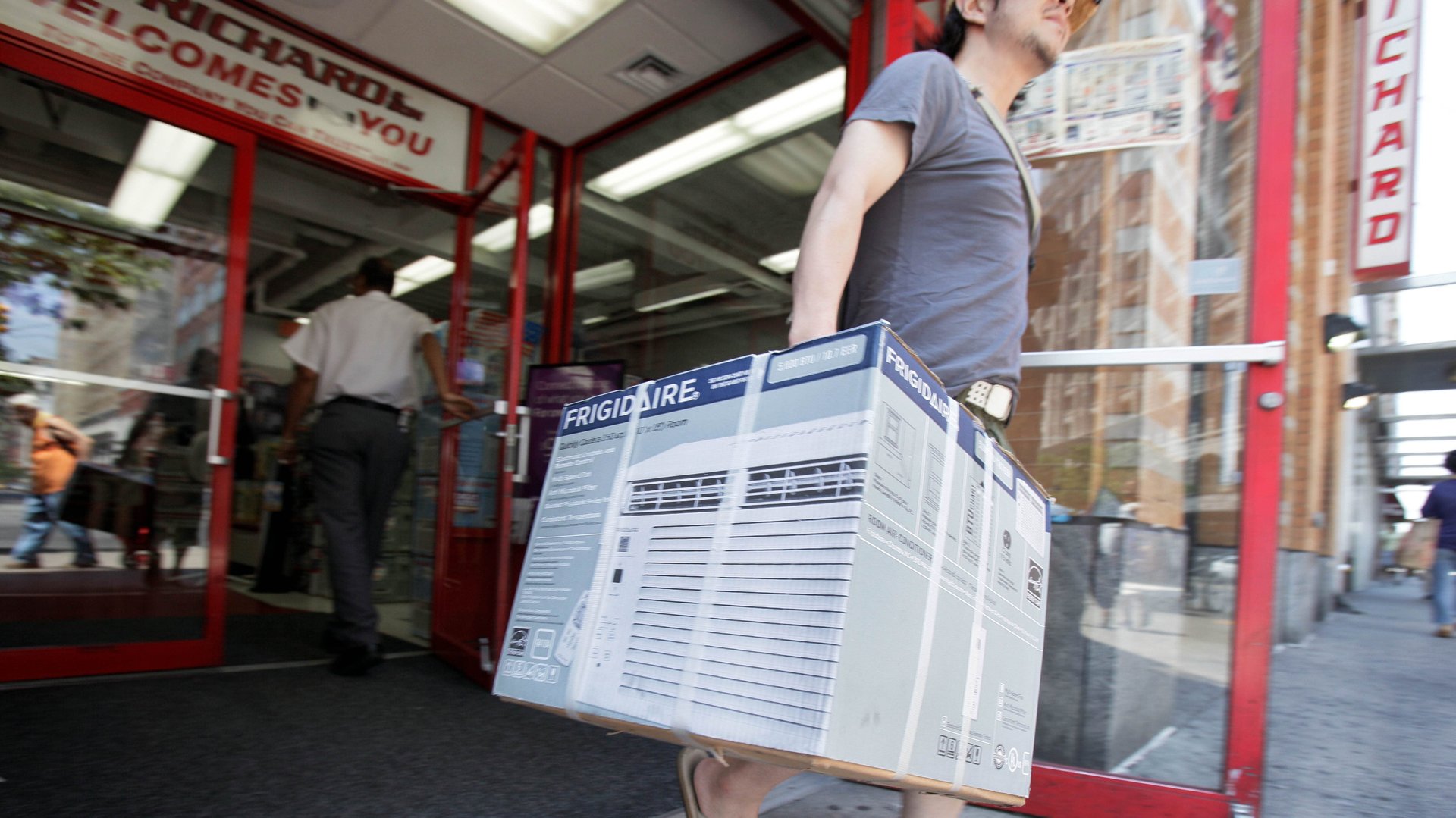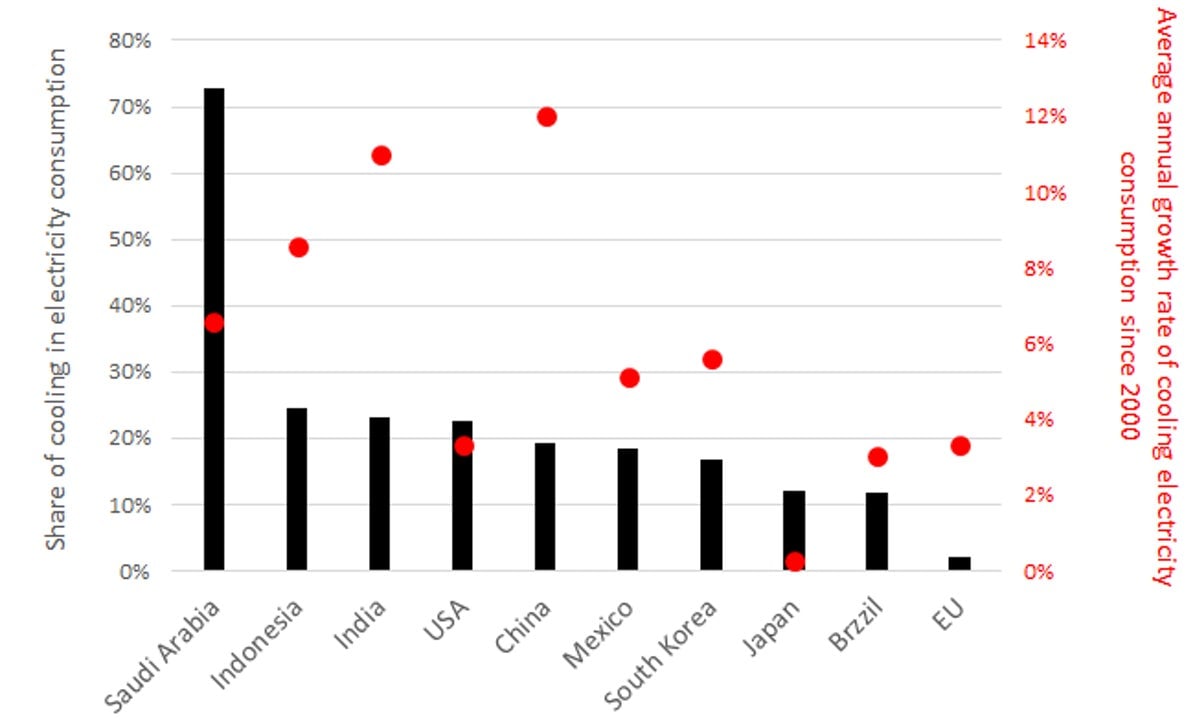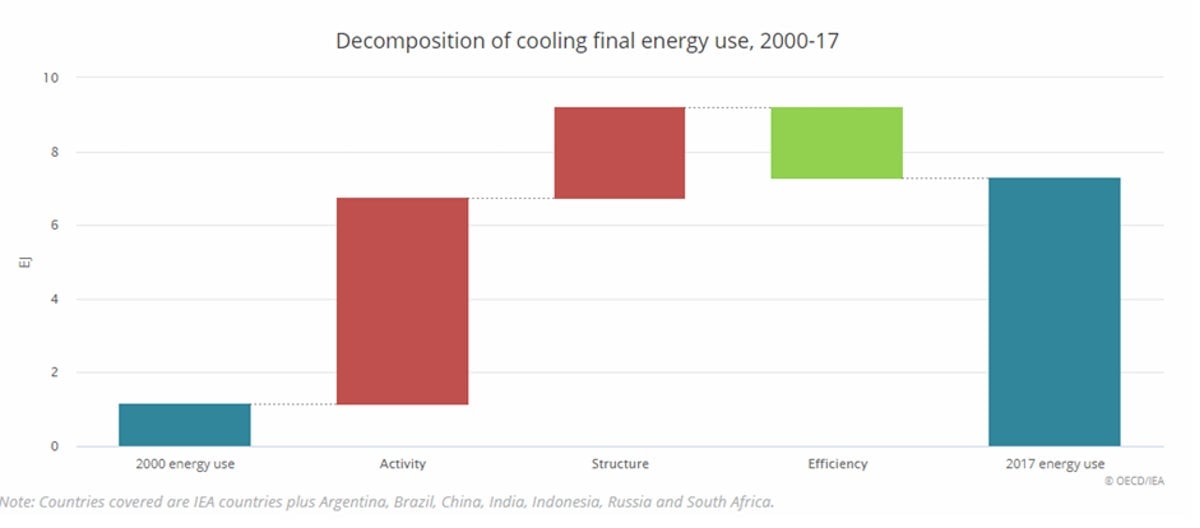How to cool your home without warming the planet
On June 28, 2019, record temperatures were recorded in the French department of le Gard, rising above the 45°C (113°F) mark for the first time in France. Less than a month later a second heat wave hit, pushing temperatures in Paris and other cities to highs never seen before.


On June 28, 2019, record temperatures were recorded in the French department of le Gard, rising above the 45°C (113°F) mark for the first time in France. Less than a month later a second heat wave hit, pushing temperatures in Paris and other cities to highs never seen before.
High temperatures are now plaguing many countries around the world, including India, which suffered suffocating heat in early June, with temperatures of more than 50°C (122°F).
Given the repeated heat waves, the use of air conditioning has soared: it improves both living conditions and economic productivity. But the instant relief it offers is offset by its harmful environmental effects.
What are the trends in A/C use worldwide? What are its environmental impacts and what actions must we undertake to improve the situation? In order to answer these questions, we used data provided by Enerdata and a 2018 report by the International Energy Agency (IEA).
A booming economic activity
Less than a third of households worldwide own an A/C unit, but some regions are more equipped than others. In the United States and in Japan, 90% of households have one. China now has over a third of the world’s A/C units, with a 60% household ownership rate—a ratio far above that of 8% for the 2.8 billion households living in the hottest regions. In Europe, on average, 20% of households own an A/C unit, but only 5% of French households do.

Trends in A/C unit sales show that the gaps are closing. Sales rose 15% between 2017 and 2018, particularly in emerging economies (China, Brazil, India, Indonesia, and Mexico), where extremely high temperatures are increasingly frequent. The number of A/C units in the world rose by 40%, and has almost doubled in Asia since 2010.
Extremely rapid growth in energy consumption
Air conditioning represents an increasingly large proportion of electricity consumption in the building sector, both residential and tertiary. It is responsible for 12% of the sector’s CO2 emissions worldwide.
In Saudi Arabia, A/C accounts for 73% of the sector’s electricity consumption, as compared to 23% in the US and India. In Europe, it accounts for only 2%, but with a marked annual increase since 2000 (3.5% growth per annum), a rate that remains modest when compared to those observed in Asia: 12% per annum since 2000 in China, 11% in India and 9% in Indonesia.
Japan is an exception, with stable consumption since 2000: since the A/C market is almost completely saturated (with a 90% ownership rate), there is little change in the number of A/C units installed, and replacing old units with more efficient models improves their overall energy efficiency.

Electrical systems tested to their limits
At the peak of June’s heat wave in France, the French transmission system operator, RTE, announced that a record high for summer electricity consumption—59,436 MW—had been reached due to increased use of A/C units and fans. They indicated that each degree above normal seasonal temperatures was correlated with additional electricity consumption equivalent to that of the entire city of Bordeaux (around 250,000 inhabitants). In China, on the hottest days, A/C accounts for up to half of peak electricity demand in the country.
Cooling our living spaces now contributes to global warming. First, a large proportion of A/C units sold or installed worldwide are highly energy intensive. They consume large amounts of electricity, produced mainly using coal, which results in high CO2 emissions.
Unfortunately, the biggest users of A/C in the world are those with the most polluting energy mix, like Saudi Arabia and China. Although energy production in the US has a significantly lower carbon index than in these two countries, it still has the highest CO2 emissions due to the amount of electricity generated to satisfy the demand for air conditioning. Trends indicate that this is a growing phenomenon. In China, CO2 emissions linked to A/C use rose five-fold between 2000 and 2017.

Air conditioners also use coolants, like refrigerants, with high global warming potential when released into the atmosphere. Some of these agents are up to several thousand times more warming than CO2. These gases are not supposed to be emitted by A/C units, but leakage often occurs during manufacturing, maintenance and breakdowns.
Can we mitigate the harmful effects?
It is, however, possible to slow certain harmful effects. First, it is important to de-carbonize the energy used by buildings, for which A/C represents an increasing proportion of energy consumption. The development of renewables worldwide should enable such de-carbonization. Second, it is imperative that architecture adapt to climate change, for both new (mostly in Asia) and existing (in Europe and North America) building stock. Insulation, appropriate building materials, and window protection against the sun are some of the solutions that can drastically reduce the need for A/C.
We must also remember that the energy efficiency of A/C units varies widely from one country to the next: equipment sold in Japan and the EU is generally 25% more efficient than that sold in the United States and China. Optimizing the energy consumption of A/C units, especially by implementing standards and obligatory energy efficiency labeling, could cut the increase in energy demand in half.

We also need stricter regulation for refrigerant fluids that have been in use for the past 30 years or so. The first generation of gas (chlorofluorocarbons or CFCs) was banned in 1981 in the Montreal Protocol, because of its destructive effects on the ozone layer.
The current generation of refrigerants (hydrofluorocarbons or HFCs) has little effect on the ozone layer but unfortunately contributes heavily to the greenhouse effect. The inclusion of HFCs in the Montreal Protocol was finally made official in November 2018, through the Kigali amendment, which aims to reduce the use of HFCs by 80% between now and 2038-2047.
Within the EU, the F-gas regulation was implemented in 2006, entirely replaced in 2015. This regulation aims to speed up a reduction in greenhouse gas emissions through a gradual ban on HFCs currently used in the cooling sector.
Finally, adopting good habits is an essential part of the solution and should allow us to reduce A/C consumption. The French Environment and Energy Management Agency, Ademe, advises that rooms not be cooled to under 26°C. The difference between outside and inside temperatures should not be more than 5 to 7 degrees. This is also a way of reducing electricity bills, since an ambient temperature just 1°C too low—for example, 23°C rather than 24°C—increases an A/C unit’s annual energy consumption by 12 to 18%.
3.5 times more A/C units by 2050
According to the IEA, the number of A/C units worldwide will rise from 1.6 billion to 5.6 billion by 2050. This increase is expected to be particularly high in emerging economies like India, where A/C could represent 45% of peak electricity demand by 2050, as opposed to the current 10%. Large investments in new electrical plants would be necessary to meet this peak demand during the night, when solar energy is unavailable.
Let us also hope that A/C manufacturers will find an alternative to refrigerant fluids. For now, the planned alternative is HFOs (hydrofluoroolefins), which have little greenhouse impact. However, one of the degradants produced by the breakdown of HFOs is toxic to plants, and remains in soils and water for long periods of time.
Translated from the French by Alice Heathwood for Fast ForWord.
This article is republished from The Conversation under a Creative Commons license. Read the original article.